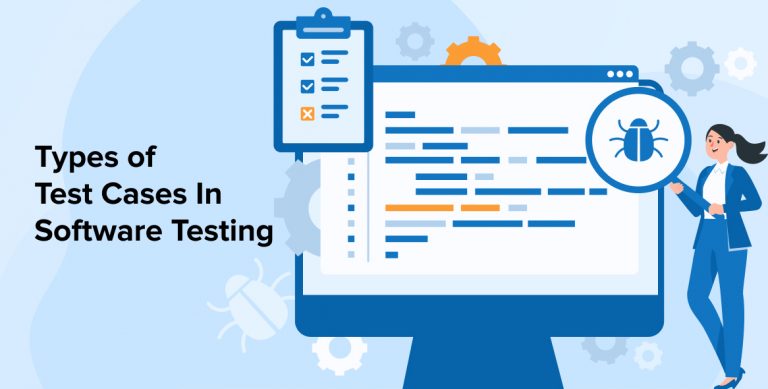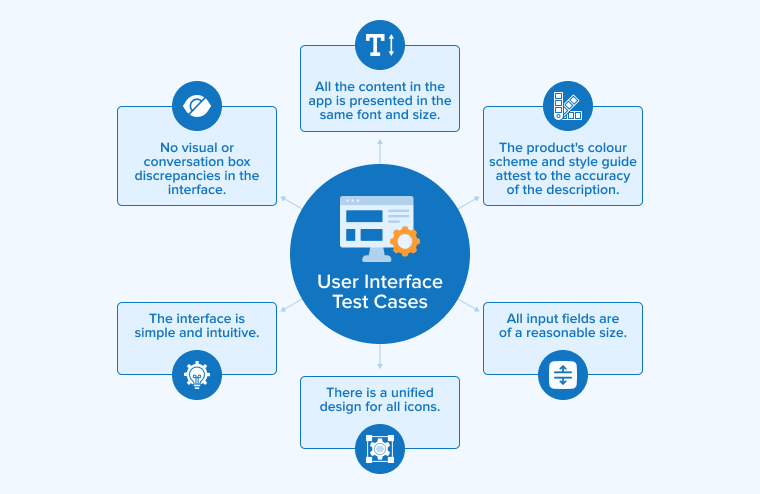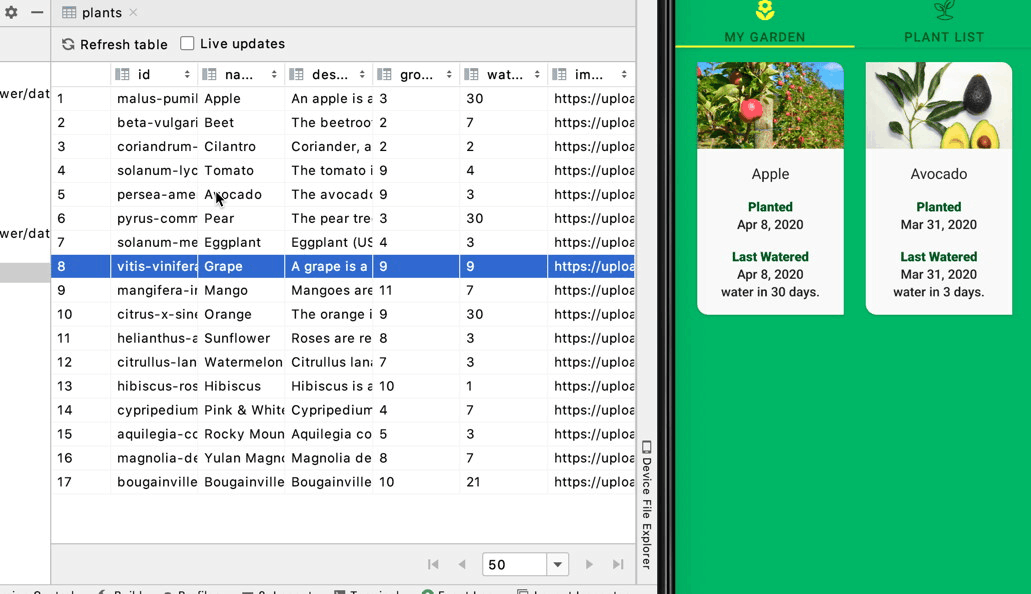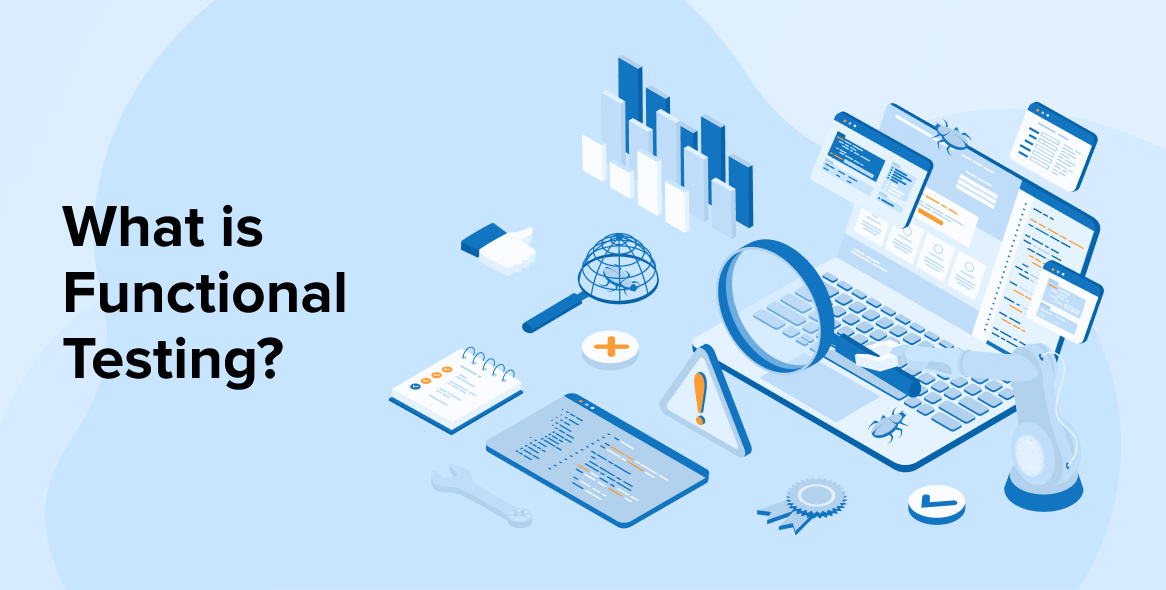
The different types of test cases lay out the procedures that must be performed to match a user’s actions. Environment details like devices, operating systems, and browsers are also included. This is useful for checking if a whole system or program satisfies all of the specified requirements.
As a tester, while creating the test cases, you should put yourself in the shoes of the end user to ensure you’ve thought of everything. As a software testing company, we’ve compiled a list of test cases that can be used according to project requirements.
1. Types of Test Cases
Here are the types of Test Cases
1.1 Functionality Test Cases
Functionality Test Cases are among the most popular ones. Their goal is to ensure that the user interface of a program is operating correctly. This is crucial for determining whether or not the software is meeting the needs of its customers.
These test cases are a form of black-box testing, and they ensure that the user experiences being tested really work as intended. This allows the tests to be run without accessing the software’s source code directly. Since creating functional test cases is part of standard quality assurance procedures, that work is often done by the QA team.
1.2 User Interface Test Cases
User interface test cases ensure that the graphical user interface (GUI) looks and works as intended. They aid in the detection of grammatical, typographical, spelling errors and presentational mistakes as well as broken or missing links and other user interface components.
- All the content in the app is presented in the same font and size.
- The product’s colour scheme and style guide attest to the accuracy of the description.
- All input fields are of a reasonable size.
- There is a unified design for all icons.
- The interface is simple and intuitive.
- No visual or conversation box discrepancies in the interface.

During UI testing, the QA team makes sure the system is reactive to the inputs and that the design is accurate. This allows test engineers to determine if the applications are performing as expected and if the user experience is seamless. Since the design team is responsible for the user interface, the testing team works closely with them to create test cases.
1.3 Performance Test Case
The efficacy and speed of software responses are both verified by performance test cases. How much time is required for the system to react once an action has been taken? The goals of each performance test case must be specified.
These test cases are very often written by the testing team and are frequently executed automatically. Dozens of performance tests may be necessary for a sizable application. When these tests are automated and run regularly, they assist reveal situations where the application is underperforming.
By simulating real-world conditions, performance test cases shed light on an application’s viability in the wild. When the testing group has obtained the product team’s performance standards, these cases may be created. However, even without criteria, many performance issues may be found manually.
1.4 Integration Test Cases
Integration test cases are used to analyze how different modules work together. The primary purpose of integration test cases is to validate the appropriate execution of module interfaces.

The development team can have recommendations regarding how the test cases shall be properly designed, but the testing team will choose which parts of the system need to be integrated and tested. Any of the two groups may write test cases. They ensure that independently functional modules can cooperate with one another.
1.5 Usability Test Cases

The primary goal of usability test cases is to determine how simple and intuitive the software is to operate. For Usability testing, testers prefer manual testing. In manual testing, QA teams write test cases using Excel or test management tools. As it requires coding intricacies often reserved for automated testing, this particular usability testing is better left to writing test cases manually.
During the earliest phases of development up until the product’s delivery, usability testing is performed repeatedly. It helps by directing the tester through various processes and scenarios. Having a functioning understanding of the application is also essential for this test scenario.
1.6 Security Test Cases

Security test cases are used to evaluate an application’s resistance to hacking attempts. Constraints and authorizations are common themes. Security-based tests and penetration testing are driven by these test scenarios.
When a software system is put through a security test, bugs and oversights that, if left unfixed, might lead to a cyber attack are revealed. When these vulnerabilities are found, developers may fix them in the code and protect data loss from occurring.
1.7 Database Test Cases
Database test cases look into the circumstances that nobody sees. Everything looks to be functioning well, and the UI is well-designed. So what happens to all that data?
Writing these test cases requires an in-depth familiarity with the application’s logic, data structures, and back-end stored functions. SQL queries are commonly used by the testing team while creating test cases for databases.
Database testing ensures the code was developed to store and process data in a consistent and secure manner.

1.8 User Acceptance Test Case
The team may test the user acceptance testing scenario with the assistance of user acceptance test cases, also known as UAT test cases. All of the functionality of the app should be tested using these situations.
These test cases aren’t meant to detect defects (which should have been discovered and repaired in earlier testing), but rather to ensure the app meets the user’s expectations. So, when they run a test, does it produce satisfactory results and user experience?

As other forms of testing will have been completed before UAT begins, attention may shift from the finer details to the wider picture. The testing team or the product manager will create user acceptance test cases for the client or end user to use. Given its prominence as the final stage before release, this test run may be considered the most crucial.
Read More – What Is Test Plan In Software Testing?
2. Conclusion
There is a wide variety of test cases to choose from. Writing a decent test case may require more professional Quality assurance skills, according to the kind of test case created.
Several types of test cases are needed for various software testing approaches. You may optimize test coverage and feel more comfortable releasing thereafter if you take them into account while designing your tests.
Read More about- System Testing: A Complete Guide






This article is very useful for testers. It provides the right type of test case depending on the specific software being tested. I'm sure it will be helpful to other test-driven developers as well. However, I would like to suggest that you also include how to write test cases for every test scenario.
Thank you for sharing this article. It is easy to understand each type of test case and simple to learn each section in detail. This article could be even better if you could include some tools for managing test cases.